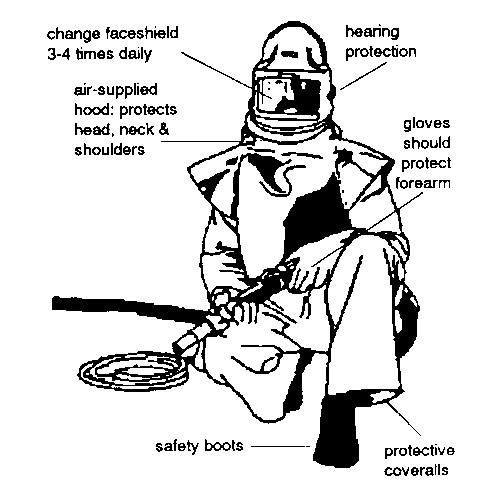CFM Requirements for Sandblasting
CFM (cubic feet per minute) refers to the volume of air that can be moved in one minute. Sandblasting requires air compression, the more CFM the better. There are several considerations when determining the necessary CFM for an application, including the compressor CFM, the sandblaster CFM and the size of the nozzle. Consider, too, the type of sand grit you will be using.
Compressor
Properly sizing a compressor for a sandblasting job means considering both the PSI (pounds per square inch) and CFM of the compressor. The two factors together determine the total supply the compressor is capable of providing. The CFM on the compressor needs to be higher than that of the blaster. Choose a two-stage compressor with five horsepower or more and at least 80 gallons to ensure that the compressor runs in intervals instead of continually.
Sandblasters come in many sizes, in ranges of PSI and CFM and degrees of portability. The biggest consideration of proper blaster size is its compatibility with your compressor and nozzle. A 14 CFM at 90 PSI is compatible with a compressor at 35 CFM and 90 PSI, as long as the nozzle is rated at under 20 CFM. If the total CFM of the air tools used (blaster and nozzle) is more than the compressor can put out, the compressor will have to run constantly to keep up.
Nozzles
Sandblasting nozzles vary greatly in materials, sizes and types for different abrasives used. A ceramic nozzle is ideal for jobs with lower pressure such as five CFM. A nozzle made from tungsten carbide is ideal for jobs up to 25 CFM. Add the CFM rating of the nozzle to the CFM rating of the blaster and make sure it falls below the CFM of the compressor for ideal efficiency.
Tags: Feng Blast News


